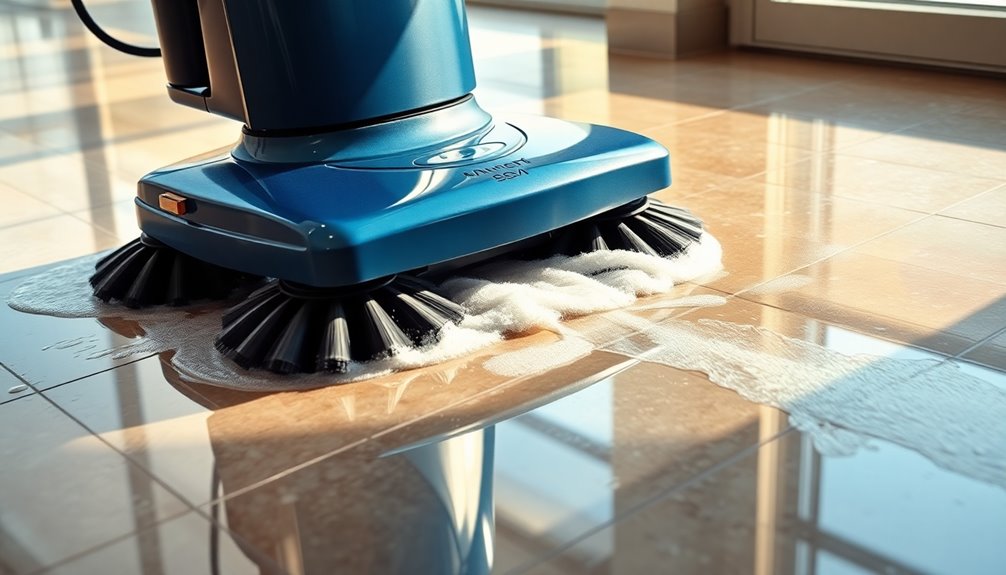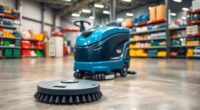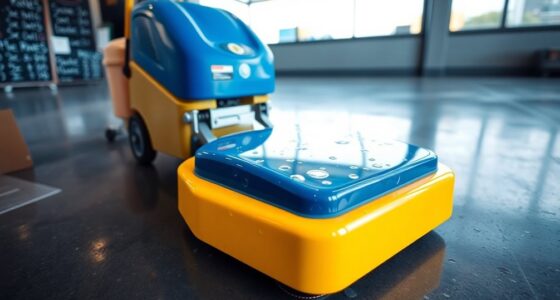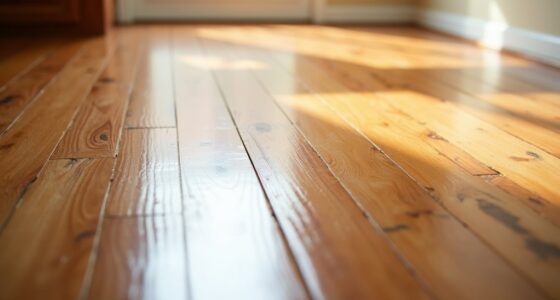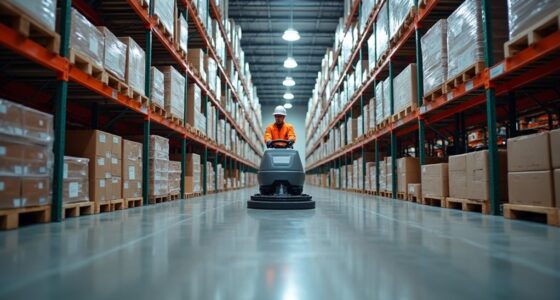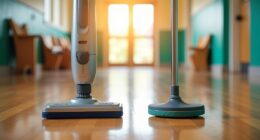A floor scrubber works by dispensing a cleaning solution that penetrates dirt and grime on your floors. As you move the scrubber, rotating brushes agitate the solution, effectively cleaning the surface. After scrubbing, a squeegee and vacuum system suck up the dirty water, leaving your floors dry and ready for use. This efficient process not only saves time but also enhances cleaning results. If you want to know more about its features and benefits, keep going.
Key Takeaways
- A floor scrubber dispenses cleaning solution that penetrates dirt and grime for effective cleaning on various surfaces.
- Rotating brushes or pads agitate the cleaning solution, enhancing its ability to clean tough floor grime.
- The dual-tank system separates clean and dirty water, ensuring a more hygienic cleaning process.
- A squeegee attachment and vacuum system remove dirty water, leaving floors dry and safe for immediate use.
- Some models can clean up to 58,000 square feet per hour, significantly reducing cleaning time and increasing efficiency.
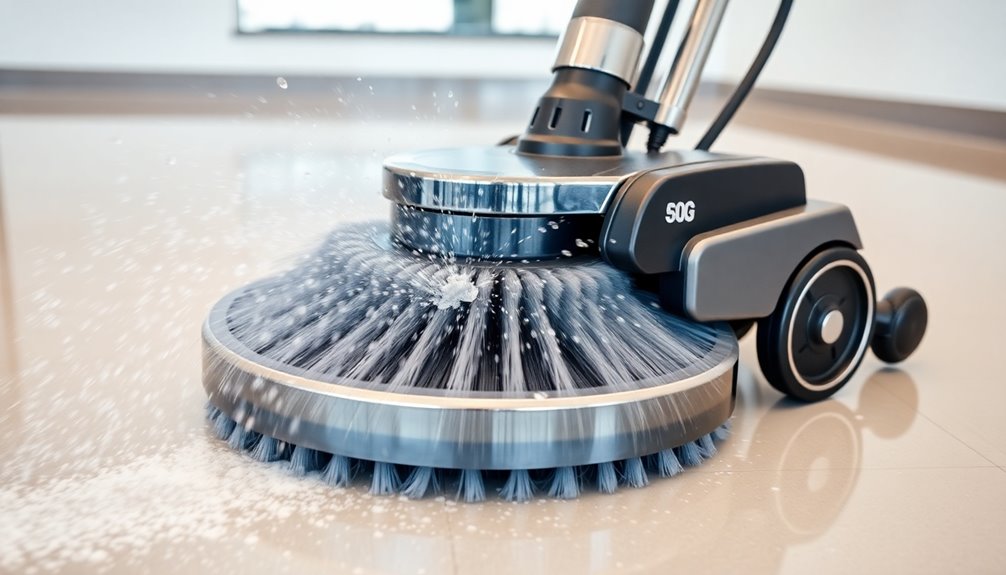
When you're tackling tough floor grime, understanding how a floor scrubber works can make all the difference. These machines are designed to simplify your cleaning tasks and achieve efficient cleaning results on various floor surfaces. At the core of a floor scrubber's operation is its ability to dispense a cleaning solution that penetrates dirt and grime, making it easier to remove. As you guide the scrubber over the floor, rotating brushes or pads agitate the solution, breaking down the grime effectively.
One of the most impressive features of an automatic floor scrubber is its dual-tank system. This design ensures that clean and dirty water never mix during the cleaning process. The separate solution tank holds the fresh cleaning solution, while the recovery tank collects the dirty water and debris. This not only keeps your cleaning process efficient but also guarantees a more hygienic outcome.
After the brushes do their job, a squeegee attachment comes into play. This vacuum system works tirelessly to suck up the dirty water and cleaning solution, depositing it into the recovery tank. By the time you're finished, your floors are left dry and safe for immediate use.
If you're dealing with particularly messy floors, you might want to consider a floor scrubber with a pre-sweep option. This feature allows the machine to gather surface debris before the wet cleaning process starts. By removing larger particles first, you enhance the overall effectiveness of the cleaning, ensuring that the rotating brushes can focus on scrubbing away the grime without obstruction.
The efficiency of these machines is further highlighted when you consider models like the CT230, which can clean up to 58,000 square feet per hour. That's an impressive amount of space that can be tackled in a fraction of the time it would take using traditional methods. With this kind of capability, you can save both time and energy, allowing you to focus on other important tasks.
Frequently Asked Questions
Is Scrubbing Better Than Mopping?
Yes, scrubbing is better than mopping.
When you scrub, you're using brushes and cleaning solutions to lift dirt and grime away efficiently. Unlike mopping, which can just push dirt around, scrubbing vacuums up the dirty water, leaving your floors cleaner and drier.
You'll notice a significant reduction in slip hazards too, making it safer for everyone.
Plus, with regular scrubbing, you're improving hygiene and using fewer chemicals and water overall.
Are Floor Scrubbers Worth It?
If you're looking for efficiency, floor scrubbers are definitely worth it.
Some models can clean up to 58,000 square feet per hour, saving you time and labor costs. They not only provide a more hygienic solution by removing dirt and bacteria effectively but also minimize water and chemical use.
How Does a Scrubber Work and What Does It Remove?
A scrubber's designed to tackle tough dirt and grime on various surfaces.
You'll notice it dispenses a cleaning solution that gets agitated by brushes or pads, loosening contaminants like dust, oil, and even bacteria.
As you move it across the floor, the scrubber's squeegee vacuums up the dirty water, directing it into a recovery tank.
This process ensures a clean, hygienic surface, making your cleaning tasks much more efficient and effective.
What Is the Life Expectancy of a Floor Scrubber?
Think of a floor scrubber's life expectancy like a well-loved pair of shoes—you can get years of use out of them with proper care.
Typically, you can expect a floor scrubber to last between 5 to 10 years. If you maintain it well, clean filters, and replace worn parts, you'll stretch its lifespan.
Also, be mindful of battery upkeep, as that can significantly impact longevity, too. Quality models usually endure longer under heavy use.
Conclusion
In the end, using a floor scrubber transforms your space into a gleaming oasis. Picture the machine gliding effortlessly across the floor, leaving a trail of sparkling clean surfaces behind. As the powerful brushes agitate and lift dirt, the vacuum sucks it all away, leaving nothing but freshness in its wake. With each pass, you reclaim your floors, watching as grime disappears, revealing the vibrant shine beneath. It's not just cleaning; it's reviving your environment.
